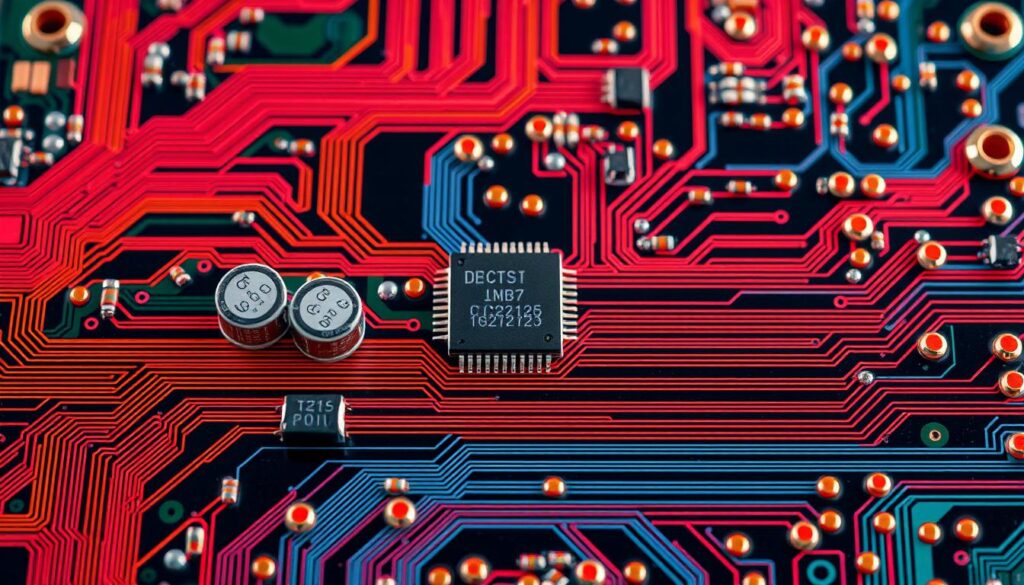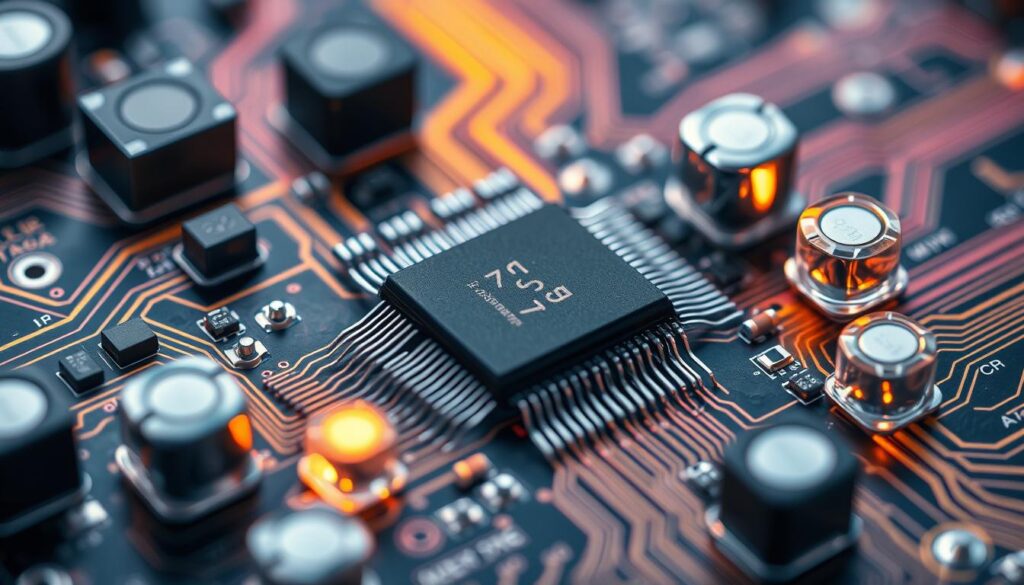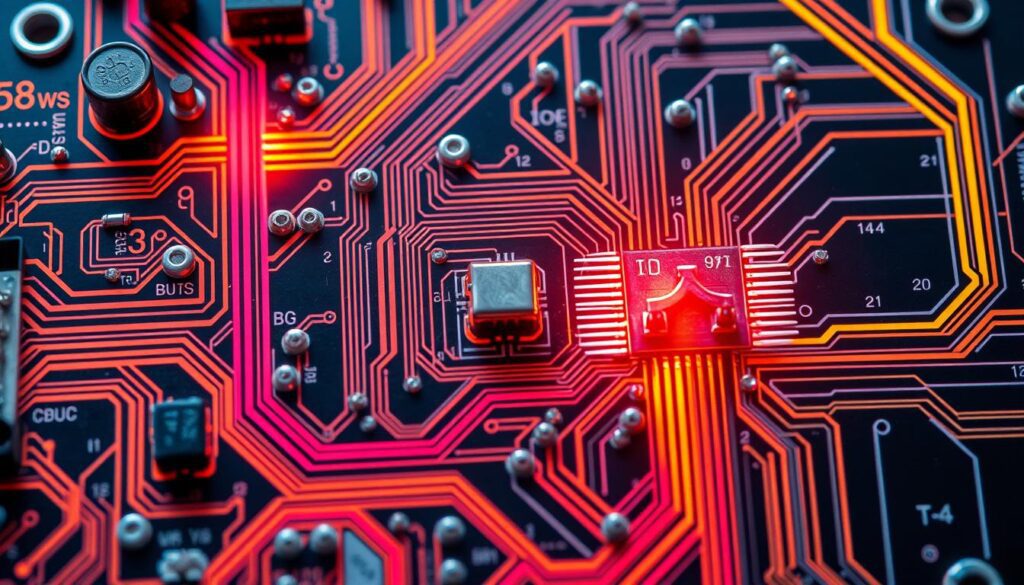Decoupling capacitors are key in power distribution and circuit design. They keep signals clean, reduce noise, and make circuits stable. These parts are placed carefully to handle power supply issues and high-frequency noise.
These capacitors act as filters, smoothing power supply changes. They protect sensitive parts from bad signals. They also handle sudden currents and voltage spikes, keeping the circuit working right.
Where you put decoupling capacitors matters a lot. They need to be close to the circuits they help. Choosing the right size and considering the circuit’s frequency are also important.
Table of Contents
Understanding the Fundamental Role of Decoupling Capacitors
Decoupling capacitors are key in electronic circuit design. They help keep the power supply stable and reliable. Let’s explore how they work, filtering out unwanted signals and managing different types of noise in circuits.
Basic Principles of Power Supply Noise
Power supply noise comes from many sources. These include voltage changes, high-frequency switching, and electromagnetic interference (EMI). These signals can mess up sensitive electronics, causing problems like erratic behavior and system failures.
How Decoupling Capacitors Filter Unwanted Signals
Decoupling capacitors store energy locally. They offer a low-impedance path for high-frequency noise to bypass the power supply. By placing them near the power supply pins of integrated circuits, they create a clean power supply. This filters out noise and interference.
Types of Noise in Electronic Circuits
Electronic circuits face various types of noise. This includes power supply bypass, high-frequency noise, voltage fluctuations, and EMI reduction. Decoupling capacitors are crucial in reducing these issues. They ensure your electronic devices work reliably.
Understanding decoupling capacitors helps designers tackle noise reduction. This leads to better circuit performance, increased stability, and higher product quality.
Strategic Placement of Decoupling Capacitors in Circuit Design
Putting decoupling capacitors in the right place is key for keeping signals clean and power supply noise low. Knowing how to place them helps make circuits work better and stay reliable.
When designing PCBs, it’s important to put decoupling capacitors near IC power pins. This shortens current loops, reducing bad effects from inductance and capacitance. It filters out high-frequency noise and keeps power stable for sensitive parts.
In multi-layer PCBs, where power planes are used, placing capacitors close to these planes is crucial. This ensures a quick path for high-frequency current. It helps control power network impedance, boosting circuit performance and signal quality.
| Characteristic | Importance |
|---|---|
| PCB layout | Optimal positioning of decoupling capacitors near power pins to minimize current loops |
| Power planes | Placing capacitors close to power and ground planes for low-impedance path and effective filtering |
| Current loops | Minimizing the length of current loops to reduce the impact of parasitic inductance and capacitance |
| Impedance control | Maintaining a stable and low-impedance power distribution network for improved signal integrity |
By using these strategies for placing decoupling capacitors, we can lessen power supply noise. This makes circuits more reliable and improves their overall performance.

Essential Applications of Decoupling Capacitors in Modern Electronics
Decoupling capacitors are key in many electronic circuits. They are used in high-speed digital systems and in analog and mixed-signal designs. Let’s look at how these components are used in today’s electronics.
High-Speed Digital Circuits
In fast digital circuits, like clock networks or processor designs, decoupling capacitors are vital. They keep the power clean and signals clear. They fight power supply noise, helping clock distribution and keeping digital signals strong.
Analog Circuit Applications
Analog circuits, like ADC/DAC performance, need a stable power supply. Decoupling capacitors help by filtering out bad signals. They also provide a path for high-frequency components, improving power integrity.
Mixed-Signal Systems
In systems with both digital and analog parts, decoupling capacitors are crucial. They keep the sensitive analog parts safe from digital noise. This is especially true in RF circuits, where analog signals must be shielded from digital noise.
Designers use decoupling capacitors in strategic places. This helps fight power supply noise. It ensures their systems work well and critical components perform at their best.

Selecting the Right Decoupling Capacitor Values and Types
Choosing the right capacitor values and types is key to effective decoupling. We must consider many factors. These include capacitor dielectrics, ESR, self-resonance frequency, and temperature coefficients. Each plays a role in ensuring the capacitor works well in various applications.
Ceramic capacitors are often chosen for high-frequency decoupling. They have low ESR and high self-resonance frequencies. But, their performance can change with temperature, making them less ideal for extreme conditions.
Tantalum and aluminum electrolytic capacitors, however, offer more capacitance for lower-frequency noise. Yet, their ESR and self-resonance might not match ceramic capacitors. Knowing the differences helps us find the best balance between performance, cost, and size for our designs.

